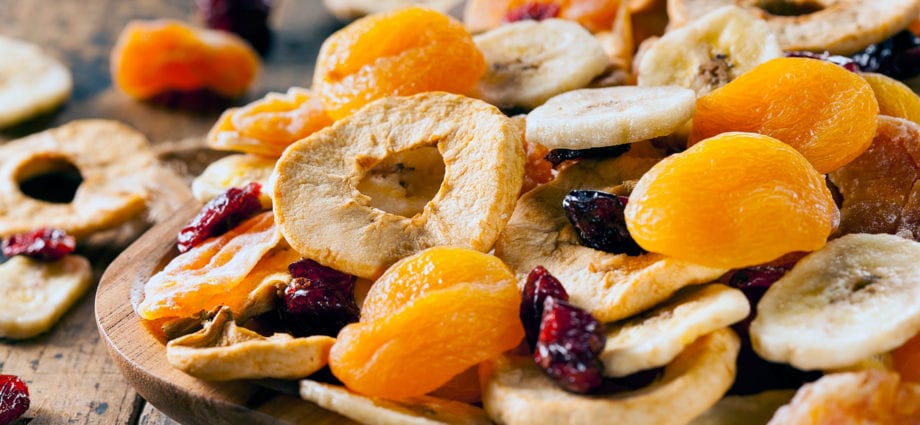Contents
Drying is one of the oldest ways of preserving vegetables and fruits, which is used not only by people, but also by some animals. And this is no coincidence. After all, dried fruits and vegetables are a storehouse of vitamins and microelements necessary for the body. That is why drying is one of the healthiest and most environmentally friendly methods of cooking and preparing food. The most popular products prepared in this way are dry apples, pears, plums and apricots, sold by grandmothers for “compote”. Dry dill, parsley and mushrooms, perfectly diversify winter types of first and second courses. Of the dry products sold in stores, dry bananas have recently gained particular popularity; prunes have always been in demand. With dried apricots, the situation is more complicated, since not all types of this dried fruit are equally useful for the body, but more on that later. Dried vegetables are now most commonly found in condiments, instant soups, and dry pet foods.
Method of preparation
Vegetables and fruits are dried in the sun, as well as in special devices for artificial drying. But most often they combine the first and second methods. The combined drying method allows you to preserve a large amount of nutrients in food prepared for future use and avoid their rapid spoilage by moths.
For drying, choose a well-ventilated place under a canopy (this will protect the food from damage in the event of a short rain). Frames are made of wooden slats, on which a mesh is then pulled (you can use an anti-mosquito net) and fixed with buttons or nails.
After that, pre-chopped vegetables and fruits on prepared frames with nets are put to dry on a special suspended structure fixed under a canopy.
Trays are sometimes used instead of such frames, but they are not suitable for all vegetables and fruits, since in some cases, especially juicy products can begin to deteriorate due to lack of air access.
After the fruits and vegetables have completely dried, they are slightly warmed up in the oven to prevent the appearance of various animals. And then they are poured into three-liter jars and closed with lids. During the winter, the workpieces are examined once or twice and, for prevention, they are slightly dried again in a slightly open warm oven. But not in a hot oven, the hand must withstand the temperature!
How to choose the right dried fruit?
If you yourself are not engaged in drying fruits and vegetables, it is worth taking note of some recommendations. Signs of a quality product:
- Dried fruits appear slightly darker than their usual color. Apricots and pears turn brown.
- Dried fruits do not stick to your hands, they have a pleasant natural smell.
- There are no traces of mold and the presence of traces of living creatures.
Dry apricots of a golden color, which can often be found in supermarkets and markets, are pre-fumigated with sulfur, and therefore cannot be considered a completely natural and environmentally friendly product!
Benefits of Dried Fruits and Vegetables
Dry fruits and vegetables retain most of the vitamins and other nutrients found in fresh vegetables and fruits. Such products help well with vitamin deficiencies, depression, anemia, heart disease, and are excellent sources of natural vitamins in the winter season.
For example, dried apricots and raisins are very useful for strengthening the heart. Apples and especially dry apple peels will help with increased intracranial pressure and edema, dry greens are an excellent source of magnesium, necessary to strengthen the nervous system. Dry vegetables and fruits are often used on long hikes and expeditions in tandem with protein foods.
Dangerous properties of dried fruits and vegetables
Do not forget that dry vegetables and fruits contain all substances in a particularly concentrated form. Therefore, it should be borne in mind that, eating about 100 grams of drying, you get 5 times more nutrients than fresh products contain.
Therefore, dried fruits can be contraindicated for diabetics due to high glucose levels, and allergy sufferers should be especially careful about dry vegetables and fruits, especially those that can cause allergies in large quantities.
For people with diseases of the gastrointestinal tract, it is advisable to eat boiled dried fruits.
In order to minimize the harm from eating dry vegetables and fruits, it is advisable to soak it in water before use, so that it regains its original moisture reserve.










